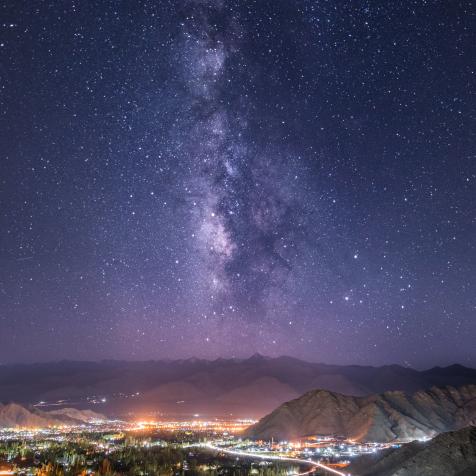
Pakin Songmor
Stuck at Home? What to See in the Night Sky this Month

In times of darkness and incertainty, opt for exploration of wonder in the skies.
Families around the world are dealing with the emerging disaster of the novel coronavirus pandemic. Schools are closed; non-essential activities are curtailed; and of the many techniques communities have employed to combat the virus, social distancing is perhaps the most effective. In short: we’re not going anywhere for a while.
But if you’re lucky enough to have a backyard, you can still escape. You just have to look up!

James Beresford
In the darkest, most rural parts of the world, you can see up to 3,000 stars, stretching from horizon to horizon. Most of you will probably see a lot less than that, so here are some standouts to help guide you.
In early April, step outside right around sunset and look westwards towards the setting sun. After it’s fallen below the horizon, look for a strangely bright star--that’s Venus, the second planet from the sun, sometimes called “Earth’s sister” (but that's a really horrible name since Venus is nothing like the Earth, but whatever). If you pull out the binoculars, you’ll get an extra special surprise and see Venus isn’t a solid disk, but a half-illuminated crescent, just like the moon.
If you wait for it to get a bit darker, you’ll see that Venus is sitting right next to a famous constellation: Pleiades, the “seven sisters”, a tight cluster of bright stars.

LazyPixel / Brunner Sébastien
Towards the middle of April, if you live in the northern hemisphere, get up about an hour before dawn and gaze southeast. In that pre-dawn light, you’ll see three planets right in a row. Jupiter, the largest planet of the solar system, will blaze brightly as a solid point of light. Nearby will be Saturn and Mars. Even though Saturn is much more immense than the red planet, it will look just as bright because it’s so much further away. You’ll be able to tell the difference between them easily. Mars, the red planet, is…red, while Saturn glows as a slightly off-white.
The special treat in the middle of April is that the three planets will be joined by a lovely crescent moon.
Once the stars come out in the middle of the night, look for the Big Dipper in the northern sky. Once you spot the bowl and handle of the dipper, follow the curve of the handle away from the constellation and you’ll come across a bright orange star: Arcturus, part of the constellation Bootes (he’s a shepherd).

penboy
After Arcturus, continue following in a straight line to Spica. This blueish-white (or whiteish-blue, take your pick) is the brightest star of the constellation Virgo.
If you’re feeling really brave and adventurous, once you’ve reach Spica you can keep on going, slowly, over to the constellation Corvus the crow, which looks like a cute little four-pointed kite in the sky.
To recap: you follow the arc of the Dipper to reach Arcturus, then you speed on over to Spica, and lastly you crawl to Corvus.
Sigh. I know. It’s cheesy, but we’ve got to get creative when it comes to entertaining ourselves when we’re out of shows to watch.



















